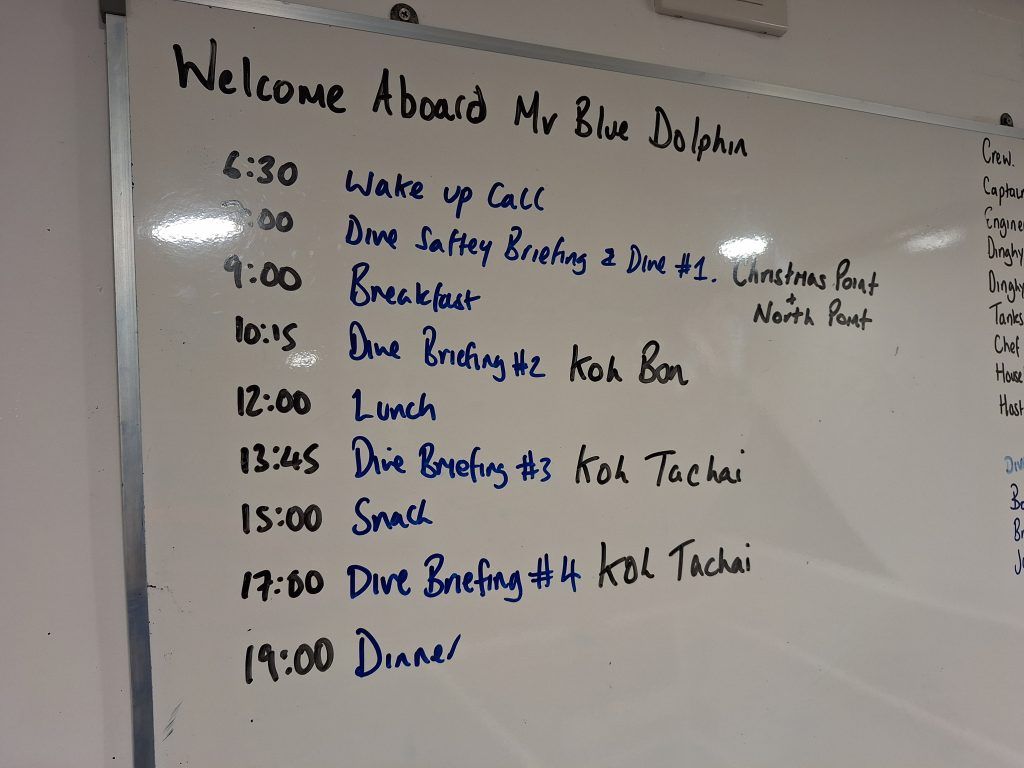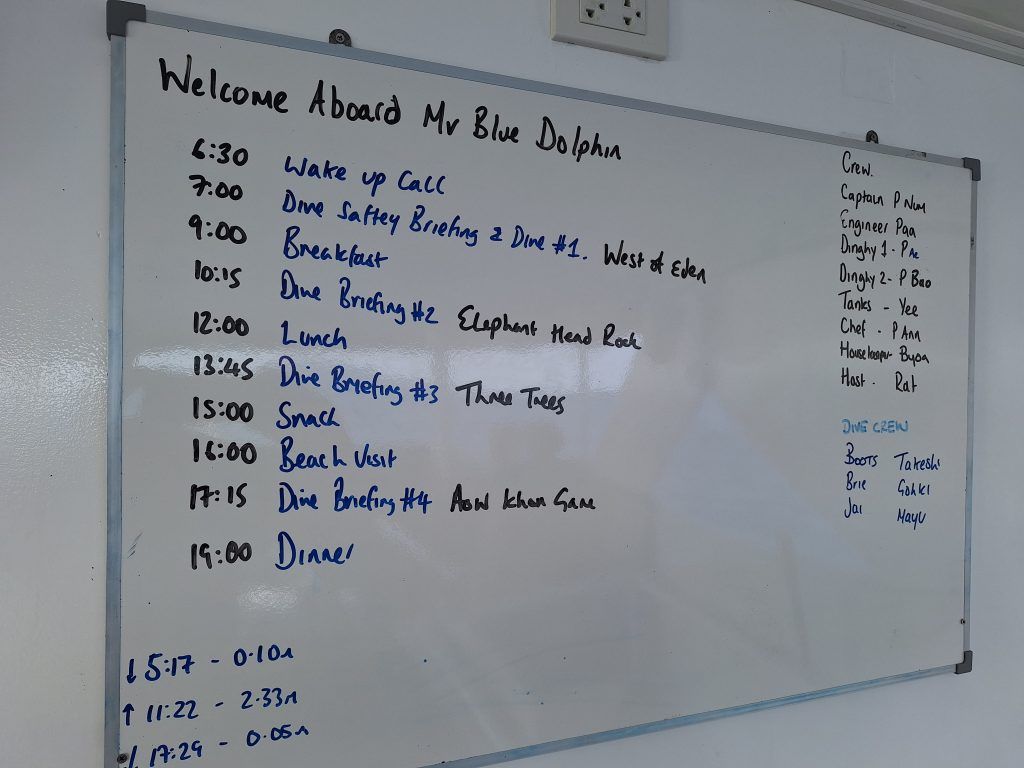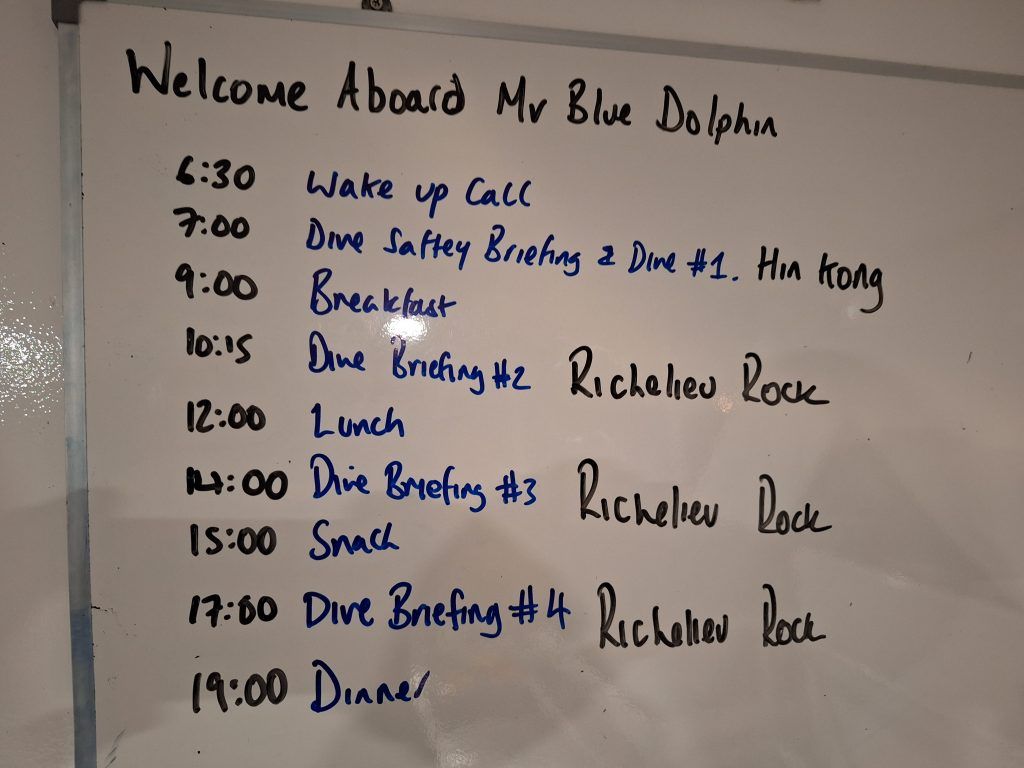The Similan Islands are located in the Andaman Sea off the southwestern coast of Thailand. I spent four days on a liveaboard dive boat exploring the bountiful underwater life of this small archipeligo. The water was incredibly warm, the visibility was mostly very good and the diving was excellent.
One of the best experiences occured as we were coming up for our safety stop on our second to last dive. A huge school of barracuda swam in front of us…
…and then formed themselves into a rotating ball. It was almost like they passed by us to get our attention and then put on a nice show especially for us.
We also saw a huge group of trevallies form a very dense bowl. Trevallies are apex predator fish and, according to Wikipedia: “Their novel hunting strategies include shadowing monk seals to pick off escaping prey, using sharks to ambush prey, and leaping to catch birds.”
The best part of the diving was the incredible amount of sea life at certain locations, as can be seen from the following videos.
Two different times we saw marbled rays gracefully glide below us.
Here, a baby shark is hiding under a rock.
At one point we saw a large shovelnose guitarfish lying in the sand and a handful of cobias circling around it. The guitarfish is a type of ray and the cobias, while looking like sharks from above, are a unique species that closely resembles ramonas or suckerfish when seen at eye level.
Twice we saw sea snakes hunting through the coral. While they are highly poisonous, they rarely threaten humans.
Keeping with the poisonous theme, here is a lionfish swinning near a scorpionfish lying in the bottom. Either of these could create quite an unpleasant diving experience. I was making sure I didn’t get too close to either as I was filming this.
At another point I saw a small group of lionfish swimming together.
Here is a rare instance of a moray eel swimming outside its hole
In this instance a moray eel is sharing its hole with a number of small shrimp.
One of the coolest things to see is a feather starfish floating by.
Mantis shrimps are thought to have the most complex eyes in the animal kingdom. They rarely leave their holes. This first video is typical of how they are seen.
But then this little guy decided to take a very brief trip outside his hole.
Harlequin shrimp are known to eat the ends of the legs of starfish. This one appears to be sizing up its next meal.
It’s always nice to spot an octopus, even if it really doesn’t want to do much as you swim by.
Here is a starfish raised up to spawn. There were scores of them in this area doing that.
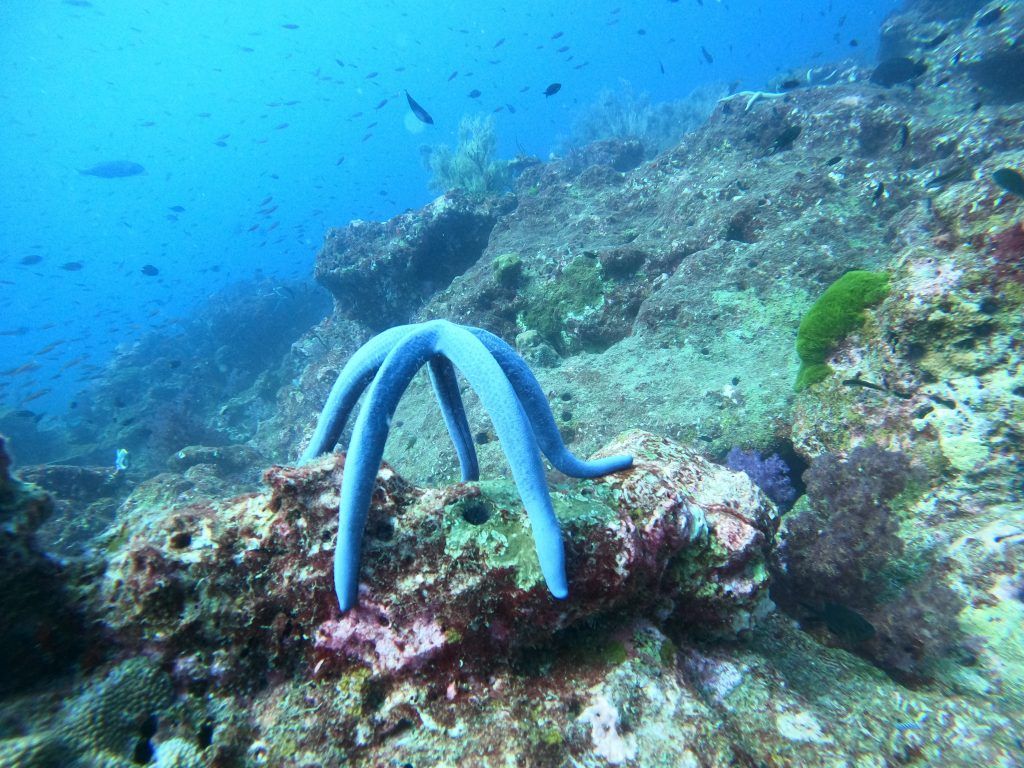
As with most great diving locations there is plenty of healthy coral throughout the Similan Islands.
Many sponges only grow a few centimeters a year. They are called the “redwoods of the reef.” This huge barrel sponge could easily be over 1,000 years old.
Unfortunately, not all the coral is healthy. Here is a whole section of dead coral, probably from recent bleaching activity.
For some reason these large rock formations below reminded me of the Andean mountains. It was as though these fish were flying over the mountains.
There was a small waterfall at one of our dive sites. It created a dramatic scene underwater.
At another site there was a blowhole where waves would wash through and create powerful underwater display.
On our very first dive we encountered some dramatic thermoclines. You can see the lack of clarity where they occured in this video. When we swam through these, the water temperature would drop from 29 celsius (84F) down to as low as 24 celsius (75F). Thankfully they didn’t last very long.
At one location there were a series of underwater sculptures to memorialize the devastating tsunami that ripped through this area in 2004.
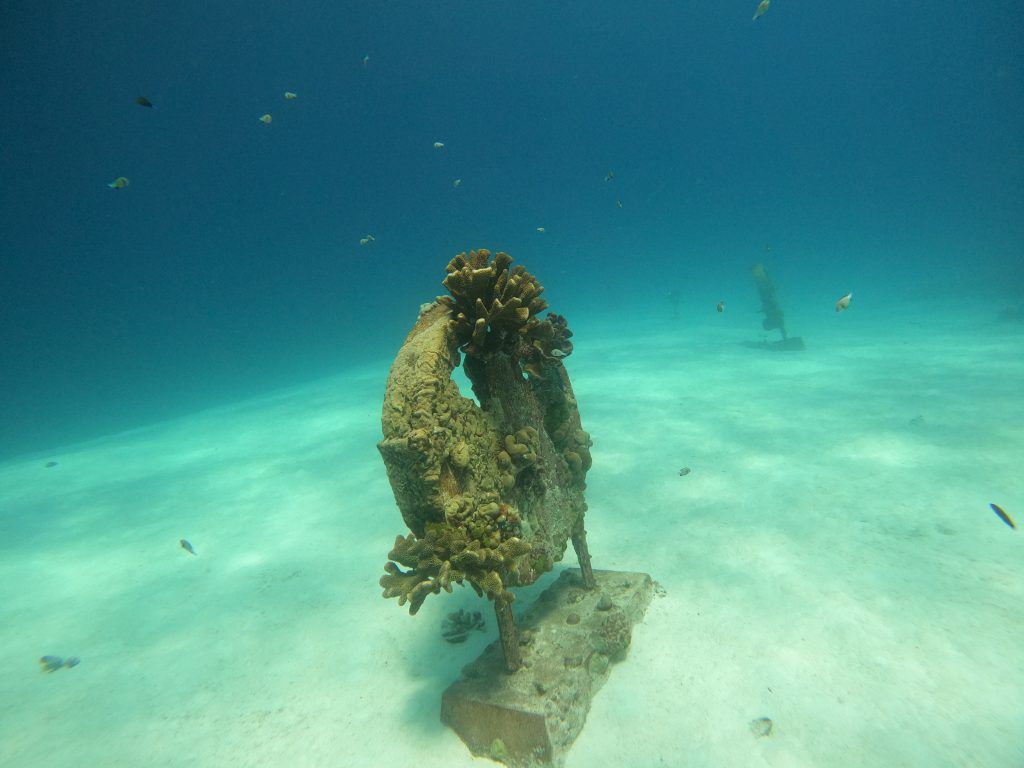
We ended our last dive on our first day with a wonderful sunset and a nice view of our dive boat.
Some of the sceneary of the Similan Islands area.
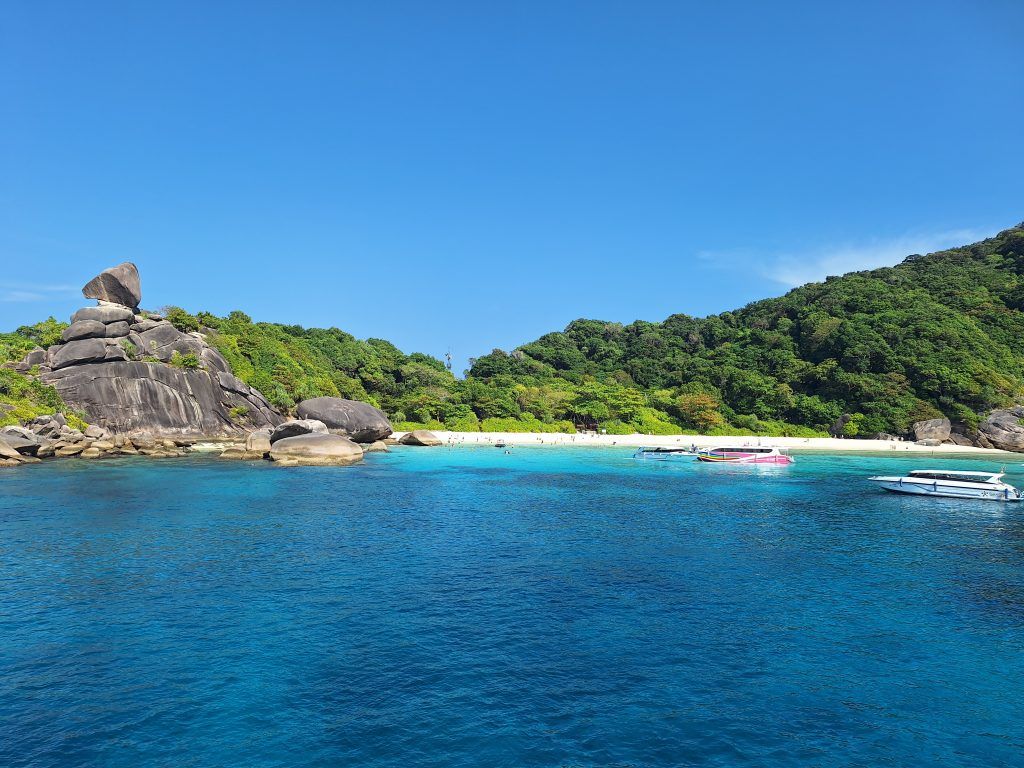
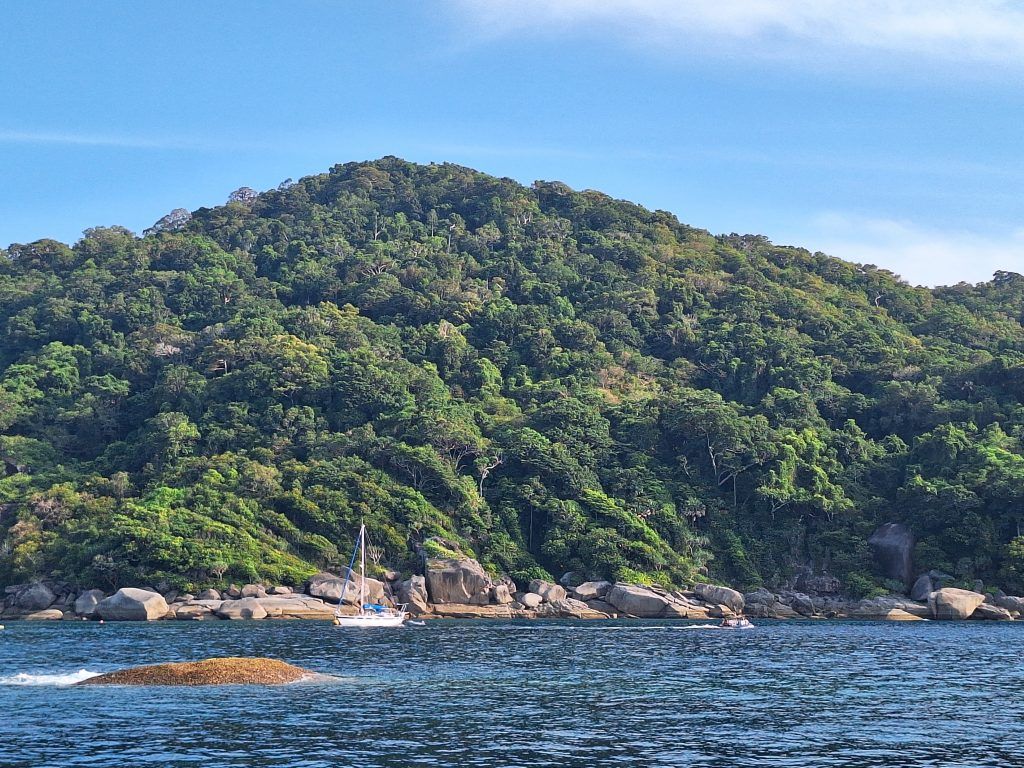
Our liveaboard was called the Blue Dolphin. It was very comfortable. We had 6 Japanese divers that dove with 3 Japanese dive crew and then 7 non-Japanese divers that dove with 3 other dive crew (from Australia, England and Thailand). Beside myself, the non-Japanese divers were from the US, Singapore, England, Germany and Switzerland (although he’s been living in the US for the past 12 years).
The crew, the food and the boat were outstanding and if I ever went to the Similan Islands again, I’d try to book with the same boat.
Our diving prep area.
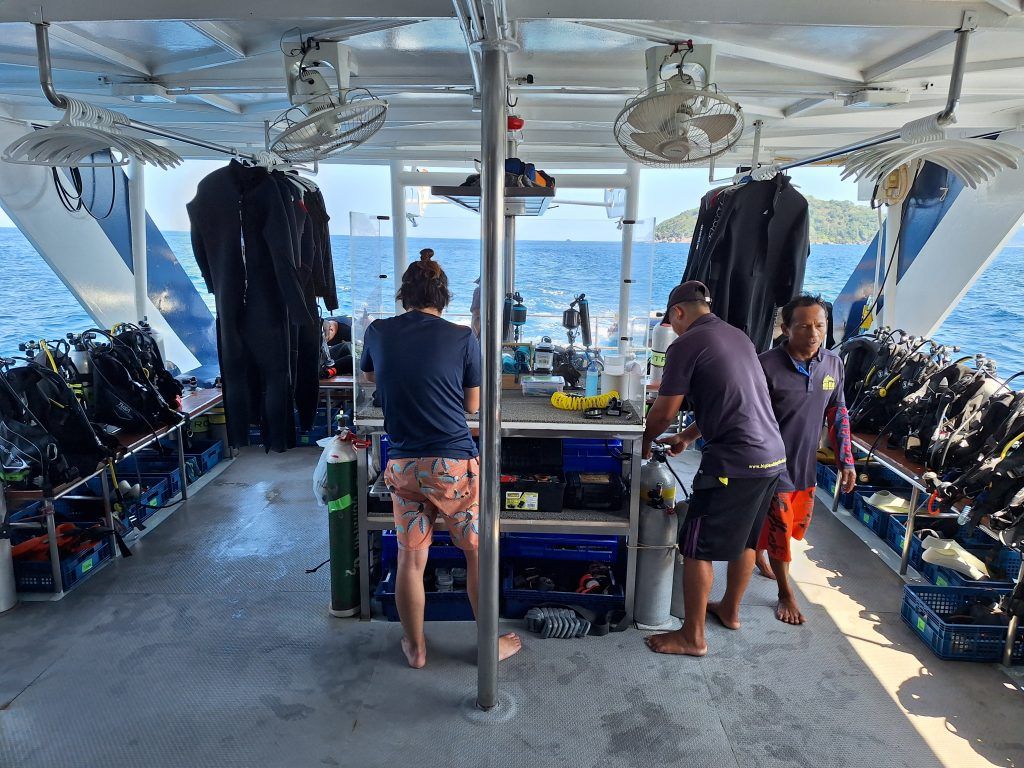
Our outside eating area.
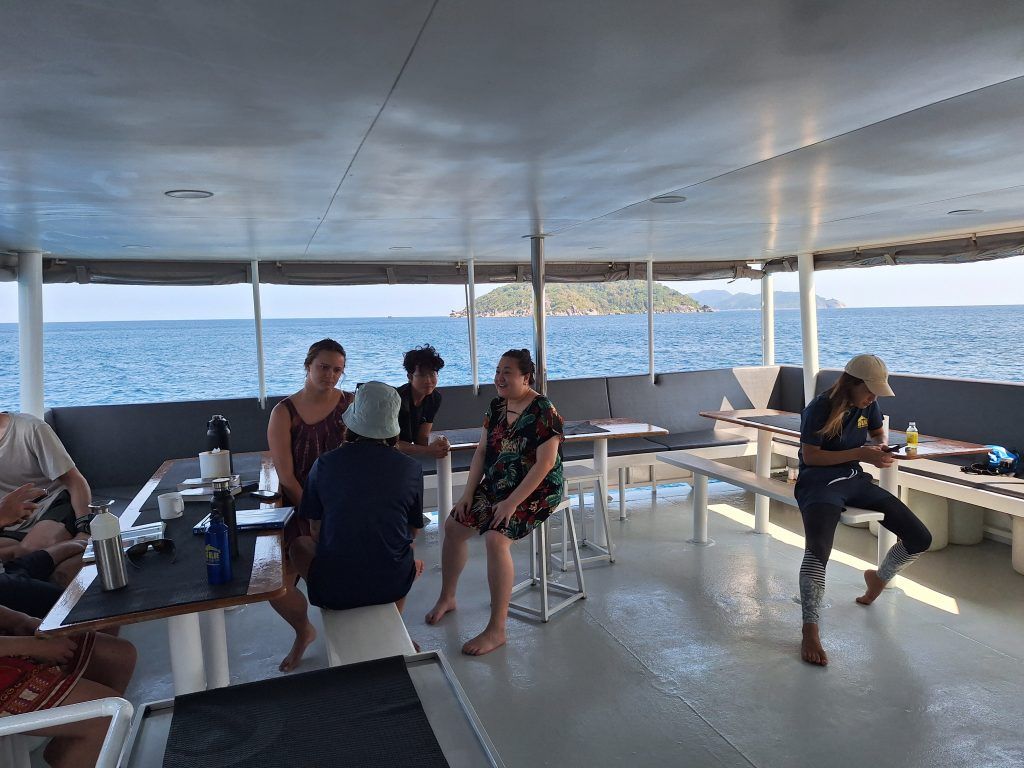
The top floor sundeck.
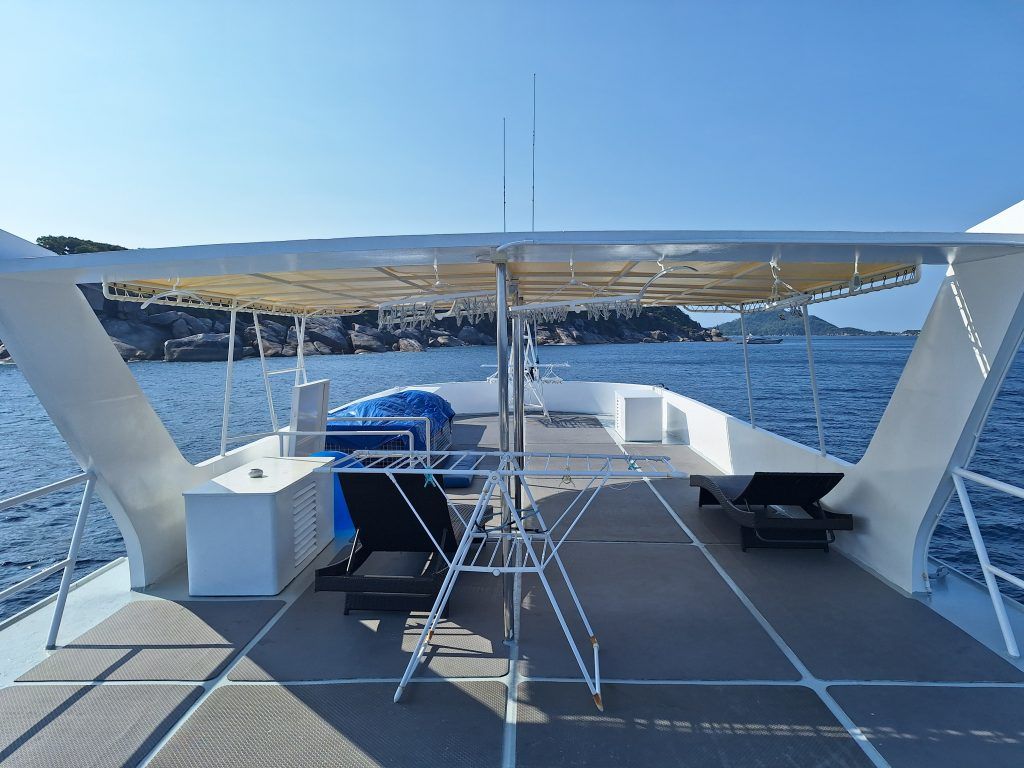
My very comfortable cabin.
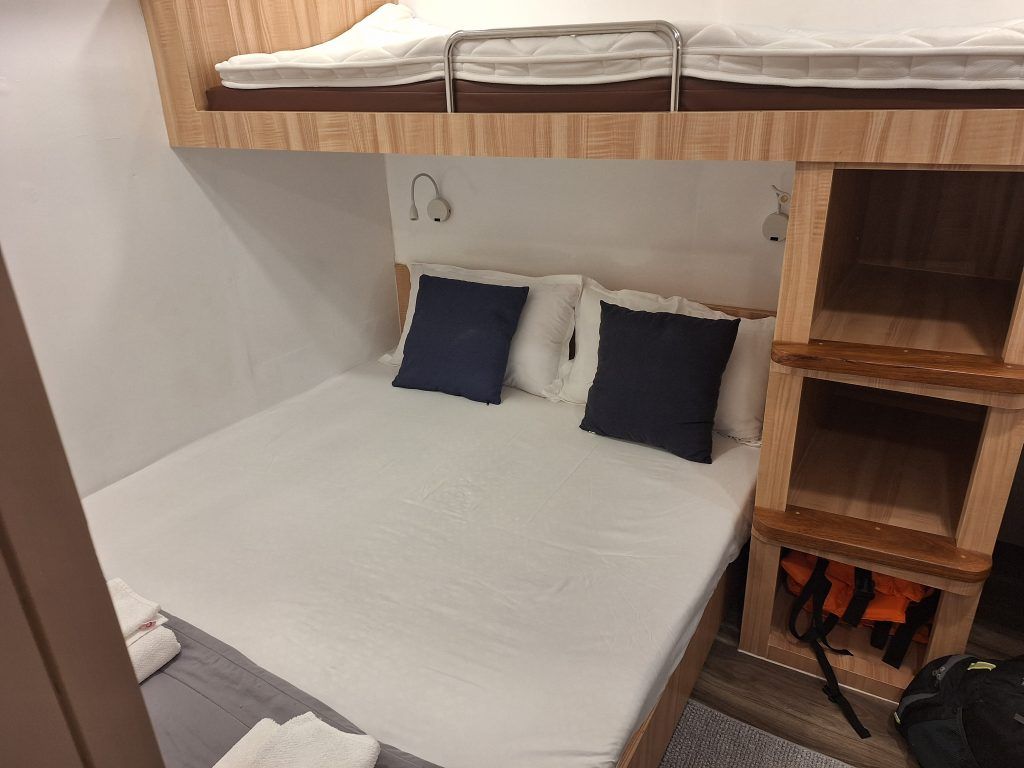
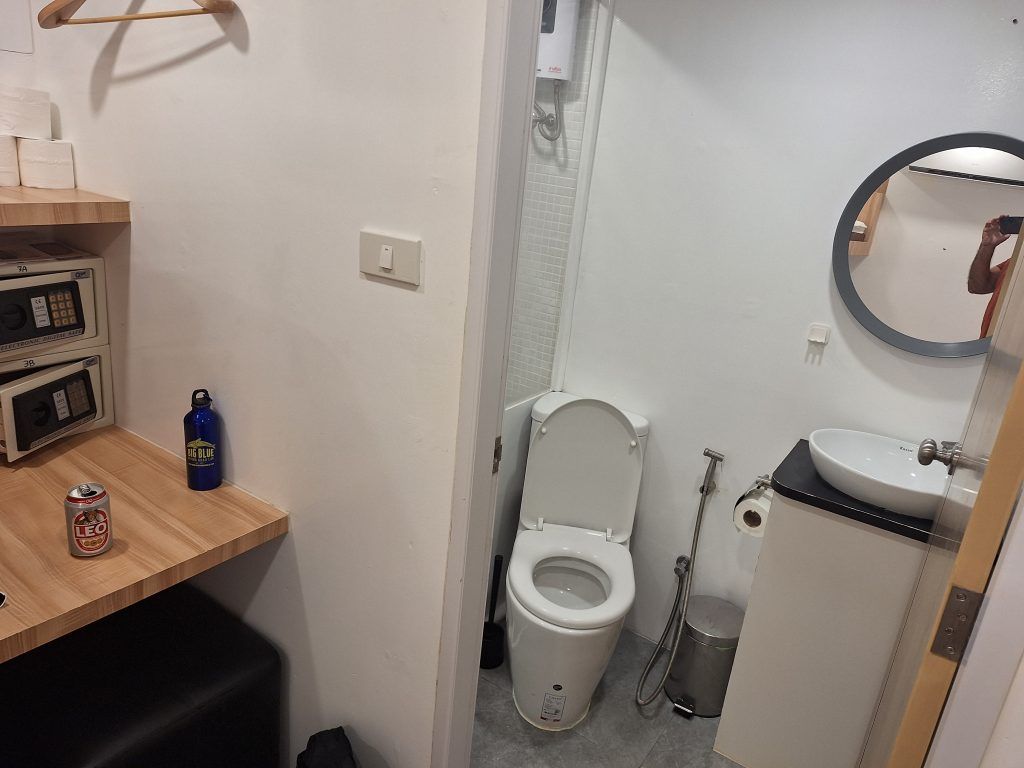
Sunrise on the first morning from my cabin window.
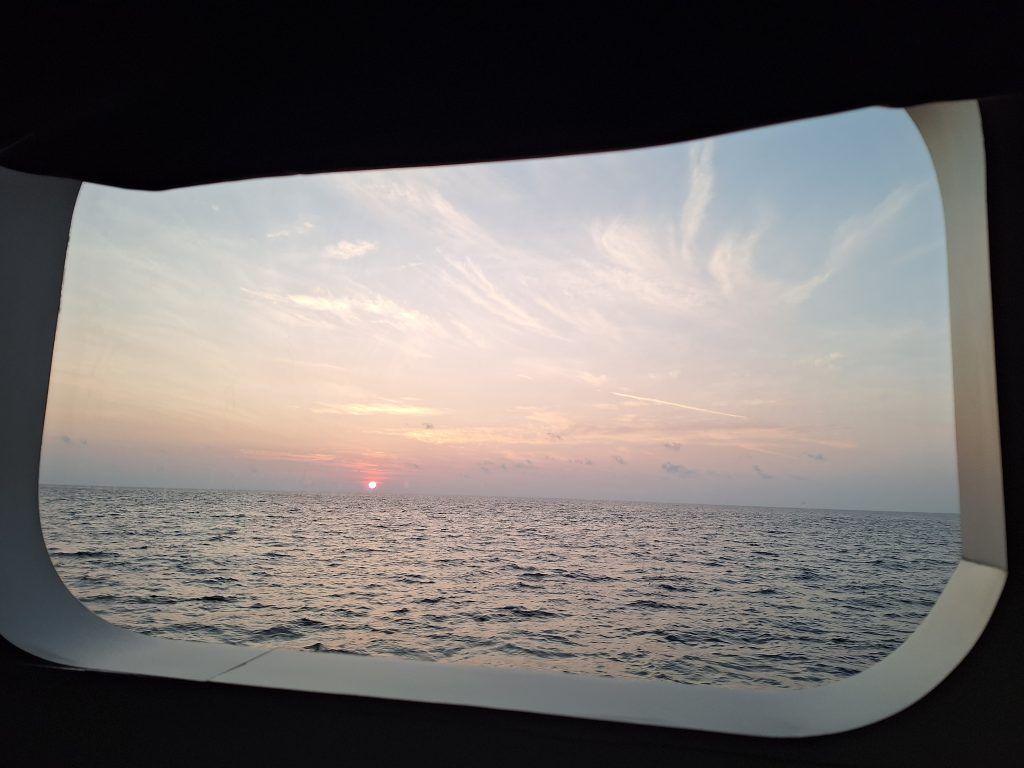
For reference purposes below are the schedules for the 3 full days. On the fourth day we did 2 dives at Koh Bon before returning to the dock around 4pm.
